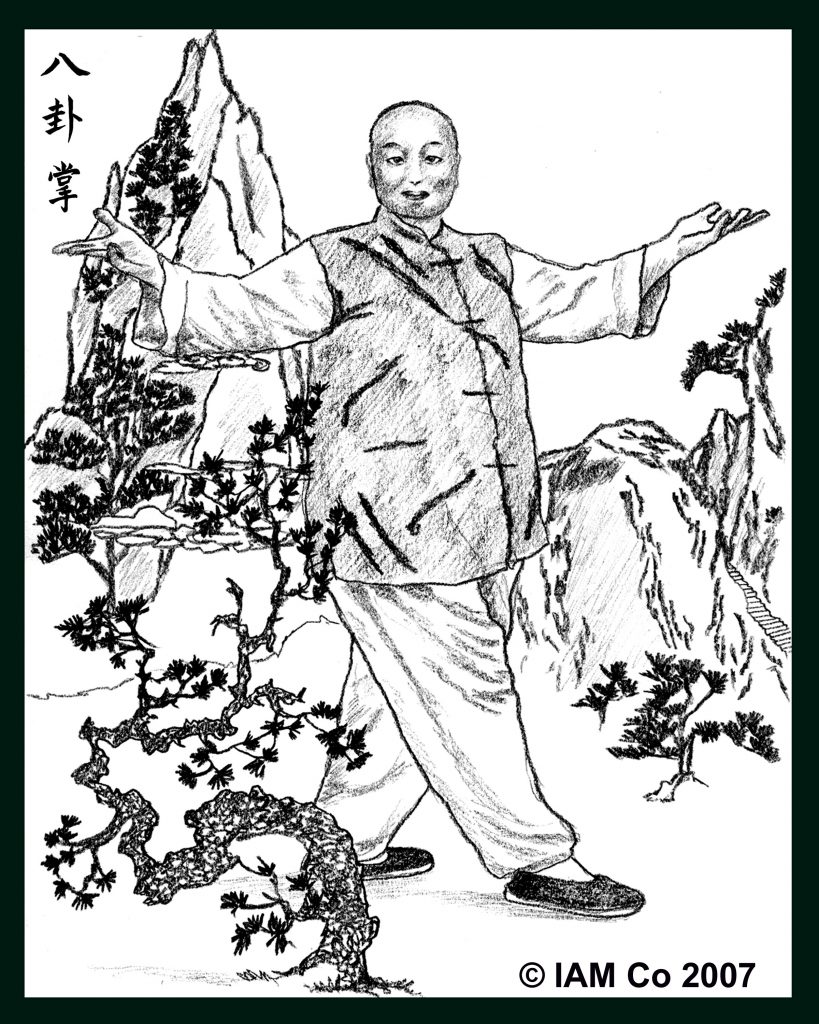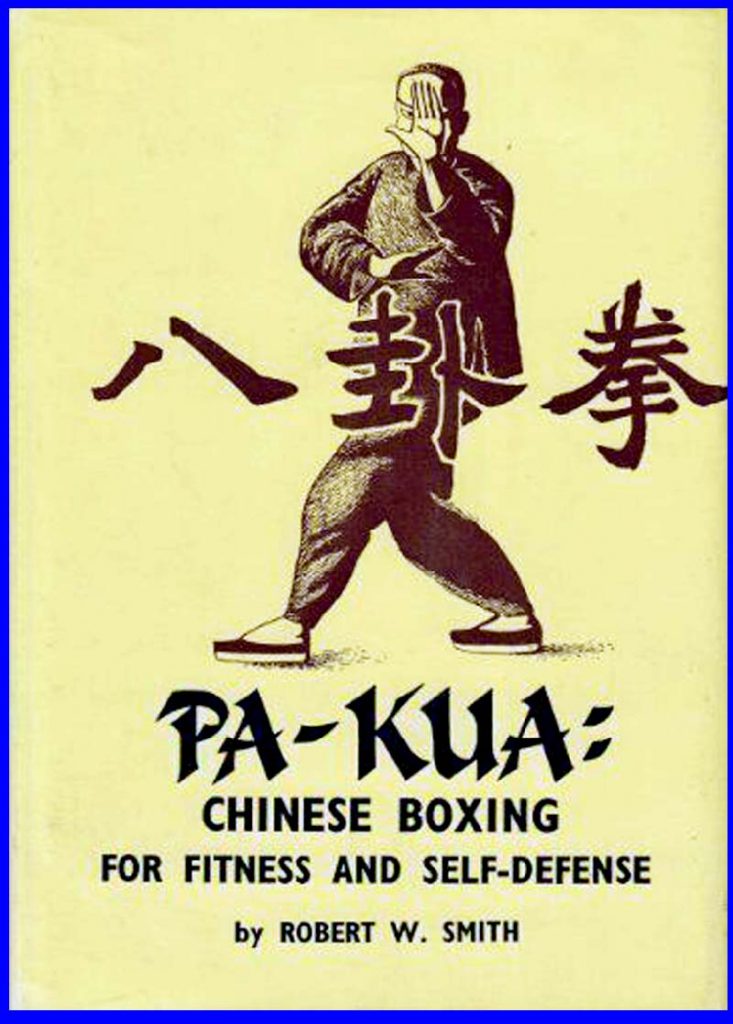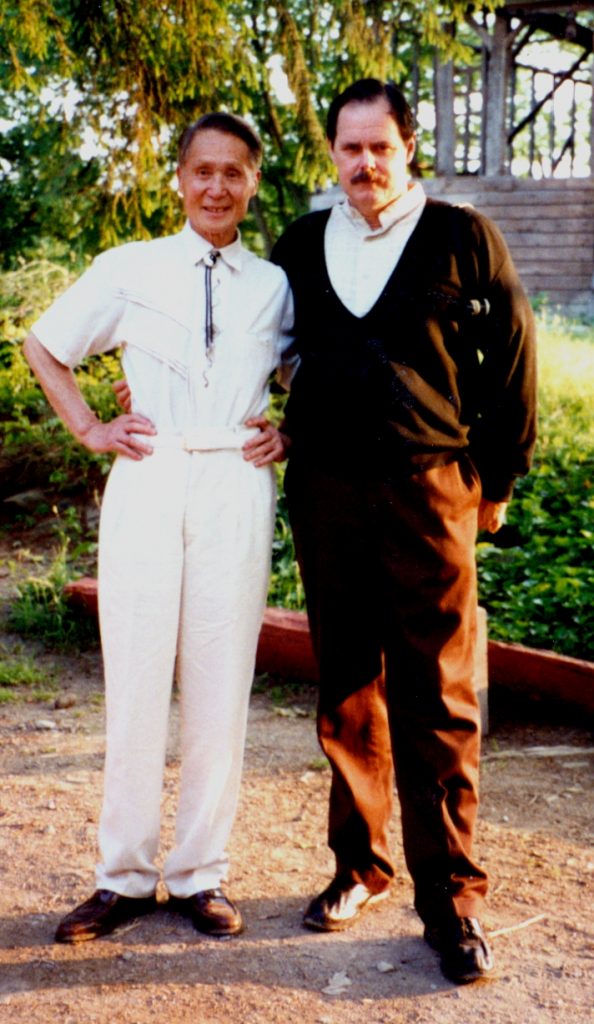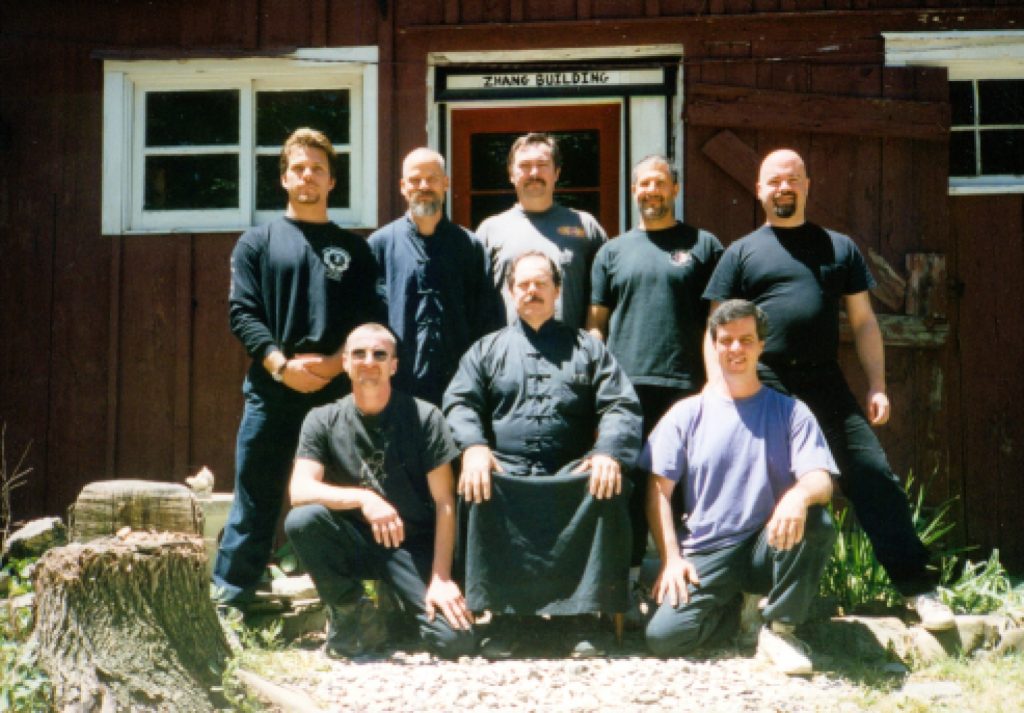Taijiquan was not the only art represented at the Zhang San Feng festivals. There were all types of martial arts represented including the lesser known internal methods of Xingyiquan, Baguazhang and Luhobafa.
In traditional Chinese martial arts are three main schools called internal martial arts, Taijiquan, Xingyiquan and Baguazhang. The reputed founder of Baguazhang was a controversial figure named Dong, Hai-Chuan. Master Dong learned a number of martial arts and later was said to have studied with Daoist teachers who taught him a method of circle walking as a meditation.

It was this walking in circles that he used in combination with his previous knowledge of martial arts around 1864 or 1865 to create a unique martial art. He originally called his method Zhuan Zhang (Turning Palms). The word palms indicates that the art abstained from the use of the fist, preferring the open palm as a defensive and offensive weapon.
In later years the name Zhuan Zhang was changed to Baguazhang (Eight Diagram Palm). Master Dong taught only a few students who were already advanced in other martial art training. With each student he examined their methods and adapted his circle walking principles to accommodate their particular martial skills. This resulted in various schools arising centered around Dong’s concept of circle walking. Each of his students eventually became teachers and instructed their students in their particular versions of Baguazhang. Today there are many variations of Master Dong’s original methods all under the umbrella name of Baguazhang.
As created by Master Dong, Baguazhang was an advanced martial training. Dong was made the head of the Emperor’s bodyguards and was never defeated in battle. His art has many applications for self-defense and was designed to be used in close quarters against one or more opponents unarmed or armed. Baguazhang makes use of specialized footwork, turning and spinning around, often behind an opponent, always moving and striking while on the move. This quality makes it very difficult to strike a good Baguazhang boxer during combat.
Training is also unique with many types of single and two person exercises and two person partner games. In this video instructors David Briggs from Bucks County, Pennsylvania and John Painter from Arlington Texas are seen playing “Two Dragons at Play” a Baguazhang moving push hands game and demonstrating empty hand defense against an attacker wielding a Chinese saber.
Baguazhang Comes West
By Dr. Desmond T. Chang

Baguazhang (Pa Kua Chang) during the 1960’s was almost unknown in China or the West because those who knew the art were quite secretive. With the exception of one book titled, Pa-Kua: Chinese Boxing for Fitness and Self-Defense printed in 1967 by author Robert W. Smith, only a handful of instructors in the West knew about this obscure internal martial art.
Articles in Western martial arts magazines about Baguazhang did not appear until the late 1970’s. It was through the efforts of Master T.Y. Pang, Shifu James Keenan and Dr. John Painter writing about Baguazhang in magazines of the day that others came to know of this amazing system. Dr. Painter was quite prolific, publishing numerous feature articles in Inside Kung Fu Magazine and other martial publications.
For the western martial arts practitioners these book and magazine articles were the first exposure to this amazing martial art of circles within circles. Here is a very old film of Master T.Y. Pang performing his aesthetic and beautiful method of Baguazhang.
Master Jou, Tsung-Hwa also promoted other Chinese arts at his Zhang San Feng festivals. He always said, “All are welcome, all come to share and we learn from each other.” Besides Taijiquan many high level teachers and masters of Xingyiquan and Baguazhang came and shared openly their expertise and knowledge with everyone.
It can be said that during the 1990’s this sort of gathering was a rarity, especially for the reclusive Baguazhang people, yet there they were, sharing and working together at the Tai Chi Farm. In this clip we can see one of the Baguazhang teachers explaining the method of stepping and palm changes that are used when circle walking in Baguazhang.
Nine Dragon Baguazhang At The Farm
By John P. Painter
The style of Baguazhang I was taught reputedly came from a controversial figure related to my Shifu (teacher), Master Li, Long-Dao of Sichuan province China. My teacher’s father claimed to have learned this old system of Baguazhang originating on Emei mountain in China from Taoist Master Li, Cheng-Yuen who was said to have lived to be well over 100 years of age.
After becoming part of the Li family system, his art was labeled Jiulong Baguazhang (Nine Dragon Eight Diagram Palm). Whether this origin story is true or not is to me of no great import as the methods have been pressure tested in actual combat by myself and others many times, always passing these real world tests.
I began training with my Shifu in 1957 and was certified to teach his family style of Chinese martial arts in 1969. Attempting to be like my teacher, a former bodyguard and martial trainer of soldiers in the army of Chiang Kai-shek, there was a brief period in which I chose not to teach, instead becoming a bodyguard for wealthy Dallas businessmen and celebrities. Although there were some injuries along the way I quickly discovered that the Li family methods were very effective for protecting oneself and others in real life altercations.
With the arrival of the first of three daughters, the dangerous bodyguard lifestyle faded into the background. I opened the first Chinese internal martial arts school in Texas in October of 1972, the Kung Fu Tao Training Center. Our school has had three name changes, The Kung Fu Tao Training Center (1972), The Wholistic Fitness Center (1983), and The Gompa (1995), but the arts being taught have always been the Li family Gong Fu methods of martial arts, meditation, philosophy, traditional weapons and Qigong.
Master Jou and Jiulong Baguazhang

I met Master Jou during a trip to Winchester Virginia while attending A Taste of China hosted by Taijiquan instructor Pat Rice. Master Jou became interested in my way of teaching Li family Baguazhang using the Yijing (Book of Changes) as emotional content for each of its eight palm changes. He was, to my amazement so impressed with the system that he invited me to attend his annual Zhang San Feng festival at Warwick New York to teach workshops on the Li family methods. A long friendship ensued that lasted more than 20 years.
After I taught the first Baguazhang workshop at the Festival Master Jou insisted that I begin teaching week long programs each year after the festival concluded. This began what came to be known as the Gathering of The Circle and it became an annual event for the week after the festival. Our first program was in 1988.
The first year we had only eight students for our Gathering of The Circle, the next twenty, and then forty or more people started coming regularly. It was from these programs that we were able to develop a network of Li family Baguazhang study groups drawn from those who trained with me at The Farm and my school in Arlington Texas. In time, many of these groups became commercial schools with branches around the globe. We are greatly indebted for the success of our arts to Master Jou for believing in us and providing a venue for us to share and grow the Li family system into a world-wide organization.
This video is from one of my early workshops at the Zhan San Feng Festival. I am teaching Baguazhang earth and fire palm applications in the Bagua Garden created by our friend Master B.P. Chan.

We are greatly indebted for the success of our arts growth to Master Jou, Tsung-Hwa for believing in us and providing a venue at the Tai Chi Farm for us to share and grow this Li family system into a worldwide organization.

This video from 1997 was filmed in the Baguazhang garden created by our good friend Master B.P. Chan. It features a multiple opponent sparring match / Baguazhang push hands and some scenes of training on the Nine Palace Poles used in Baguazhang to train for combat against multiple opponents.
Master Jou Asks For My Help

Master Jou had a master plan. I learned of this plan during one of our Gathering of The Circle Baguazhang workshops at the farm. He came to my cabin one chilly night. We talked Yijing, did some Taijiquan push hands and explored his own unique ideas on Baguazhang until midnight. The deft skill and fluidity of this living master struck me as amazing and filled me with admiration. Trying to grab him or push Jou, Tsung-Hwa was like attempting to get a python to coil in a direction it did not want to go. In short, impossible.
I asked him why he did not show all of the things he had discovered to the rest of the world. He said “John, I will do this. I have a dream that people of the world use these internal arts to enhance their health and longevity, but also know them as martial arts. Taijiquan the martial side is all but lost even in China. I must bring back the original arts for health and martial skills. I am only 80 so no one will believe me, but when I am 90 they will all be willing to listen to the master keys of internal power, when I can show them what I can do. You John, are very clever and I like your Baguazhang teaching so you must promise to do the same with Baguazhang. Then the internal martial arts can be open and everyone will believe in their power. We must unite all as one family.”
This request shook me to the core. I had been discouraged by what I was in the Chinese martial arts and was thinking of going back to my former occupation. Now I was being asked to make a lifelong commitment to help support his dream. I knew in my heart that if anyone could do this it would be Master Jou. His words and sincerity inspired and encouraged me and then and there I resolved to do as he asked. I pledged to devote myself to the arts in the same way he had done. To search for truth, share openly, teach holding nothing back, and foster the spirit of brotherhood and honor among martial arts students and teachers without regard to style or method.
His research into the Yijing (I-Ching) principles and his internal art “master keys” served to enhance my Li family Baguazhang. His contributions to the internal martial world and to sponsoring my Jiulong Baguazhang system are a gift that can never be repaid, however I continue to try. Today at almost 80, I have taught over 3,000 students in the 51 years I have been teaching, written over 100 articles on Taijiquan, Baguazhang and Xingyiquan in national magazines, taught countless workshops and produced a six video series on Jiulong Baguazhang. We also operate an online school teaching the internal arts and Qigong all because of a promise I made to my friend so long ago.
Master Jou is gone but we must forge on without his help and encouragement, his words in his books and through his close students still ring in my ears, “Each day strive to make a little progress, never give up!” His legacy and methods will live in the hearts and minds of those who knew him best so long as they are shared and passed down from one generation to another.
